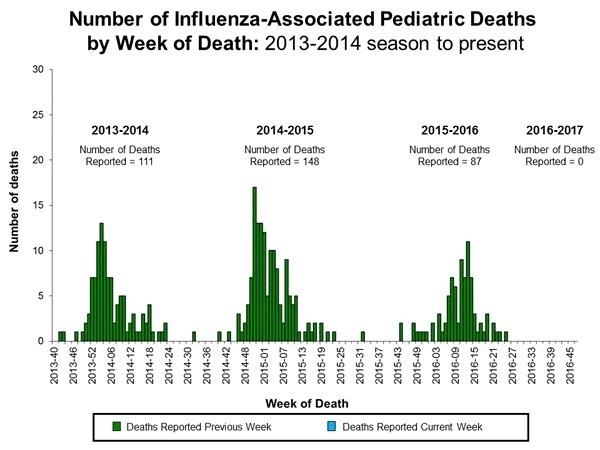With the height of the flu season ahead, there are some good reasons to keep a flu vaccination in mind.
In the United States, the flu season lasts from autumn through late-winter. As many people know, influenza, or the flu, is a contagious respiratory virus that targets the lungs, throat, and nose. People of all ages are vulnerable to the flu, and it is responsible for millions of illnesses, and thousands of deaths, in the US each year.
Because of the risks of influenza, agencies like the Centers for Disease Control and Prevention (CDC) and the American Academy of Pediatrics (AAP) support annual vaccination campaigns to reduce the incidence and spread of influenza across the country. This year, several factors combine to create a unique, and potentially worrisome, scenario for the 2016-2017 flu season.
#1. Nasal Spray Flu Vaccination Not Available This Year
Earlier this year, the CDC announced the decision of its Advisory Committee on Immunization Practices (ACIP) to stop recommending the live attenuated flu vaccination (LAIV).
The vaccination, delivered as a weakened form of the virus in a nasal spray, was believed to have only about a 3% effective rate against any flu strain in children ages 2 through 17 during 2015-2016. In contrast, inactivated influenza vaccine given by injection is effective about 63% of the time. The vaccines vary in their efficacy against certain strains, as shown in the chart below.

According to the CDC, the nasal spray was only 8% of total vaccinations given in the 2015 season, but it was a full third of flu vaccinations given to children.
Flu vaccinations not only confer some immunity on the recipient, but they also help a community repel a larger viral outbreak. The fewer people that get sick in a given year, the less likely an unvaccinated person is to be exposed to the virus. During the 2015-2016 season, an estimated 87 children in the US, mostly thought to be unvaccinated, died as a result of influenza.

With the nasal spray vaccine no longer recommended, officials hope healthcare providers and parents work together to ensure a decline, not an increase, in the number of illnesses and deaths caused by influenza in the coming months. Even though that means more kids crying over needle sticks.
#2. Vaccination Rates Dropping for Older Americans
Adding to concern about the vulnerability of the youngest, health officials expressed concern about dropping vaccination rates for US adults over 50. According to the CDC, coverage from the influenza vaccination dropped by 1.5% overall during the 2015-2016 flu season.
"During the severe 2014-2015 season, more than three-quarters of the nearly 1 million people hospitalized due to influenza were age 65 years and older," William Schaffner, medical director of the National Foundation for Infectious Diseases, said in a press release. "Vaccination not only reduces the chance that older adults will get the flu, it can help keep them out of the hospital by reducing the severity of the infection and related complications if they do get the flu."

The majority of influenza-related illnesses and deaths occur in older adults. Although vaccination for the flu takes approximately two weeks to become effective, it is not too late to give your immune system a boost in beating back an influenza infection this season. Even if you are healthy, protecting yourself from passing on the virus is the best way to protect others.
#3. The Height of the Flu Season Lies Ahead
The CDC notes influenza case counts typically peak between December and February of each year, but can occur as late as May. Among others, variables that impact the severity of the season include the formulation of the annual vaccine, contagion factors, and the number of individuals within the community who are vaccinated or immune.

The effectiveness of the annual vaccination is usually unknown until the flu season is well underway. For most, vaccination remains the best defense against suffering, or sharing, a debilitating, sometimes fatal illness.
Just updated your iPhone? You'll find new emoji, enhanced security, podcast transcripts, Apple Cash virtual numbers, and other useful features. There are even new additions hidden within Safari. Find out what's new and changed on your iPhone with the iOS 17.4 update.




























Be the First to Comment
Share Your Thoughts